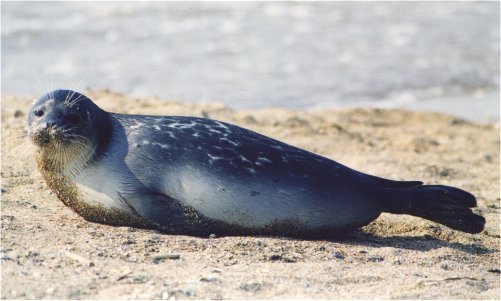Caspian Seal
The Caspian seal (Pusa caspica) is one of the smallest members of the earless seal family and unique in that it is found exclusively in the brackish Caspian Sea. They are found not only along the shorelines, but also on the many rocky islands and floating blocks of ice that dot the Caspian Sea. In winter, and cooler parts of the spring and autumn season, these marine mammals populate the Northern Caspian. As the ice melts in the warmer season, they can be found on the mouths of the Volga and Ural Rivers, as well as the southern latitudes of the Caspian where cooler waters can be found due to greater depth.
It is so-far unclear as to how these seals became isolated in the landlocked Caspian Sea. One of the most widely known hypotheses argues that the seals reached the Caspian during the Quaternary period from the north when continental ice sheets melted, and are descended from the ringed seal.
Description

Adults are about 126–129 cm in length. Males are longer than females at an early age, but females experience more rapid growth until they reach ten years of age. Males can grow gradually until they reach an age of about 30 or 40 years.Adults weigh around 86 kg (190 lb); males are generally larger and bulkier. Their dental formula is I 3/2, R 1/1, PC 6/5.
The skull structure of the Caspian seal suggests it is closely related to the Baikal seal. In addition, the morphological structures in both species suggest they are descended from the ringed seal which migrated from larger bodies of water around two million years ago.
Caspian seals are shallow divers, with diving depths typically reaching 50 m and lasting about a minute, although deeper and longer dives have been recorded, with at least one individual seen at depths in excess of 165 m.They are gregarious, spending most of their time in large colonies.
Caspian seals can be found not only along the shorelines, but also on the many rocky islands and floating blocks of ice that dot the Caspian Sea. As the ice melts in the warmer season, they can be found on the mouths of the Volga and Ural Rivers, as well as the southern latitudes of the Caspian where cooler waters can be found due to greater depth.